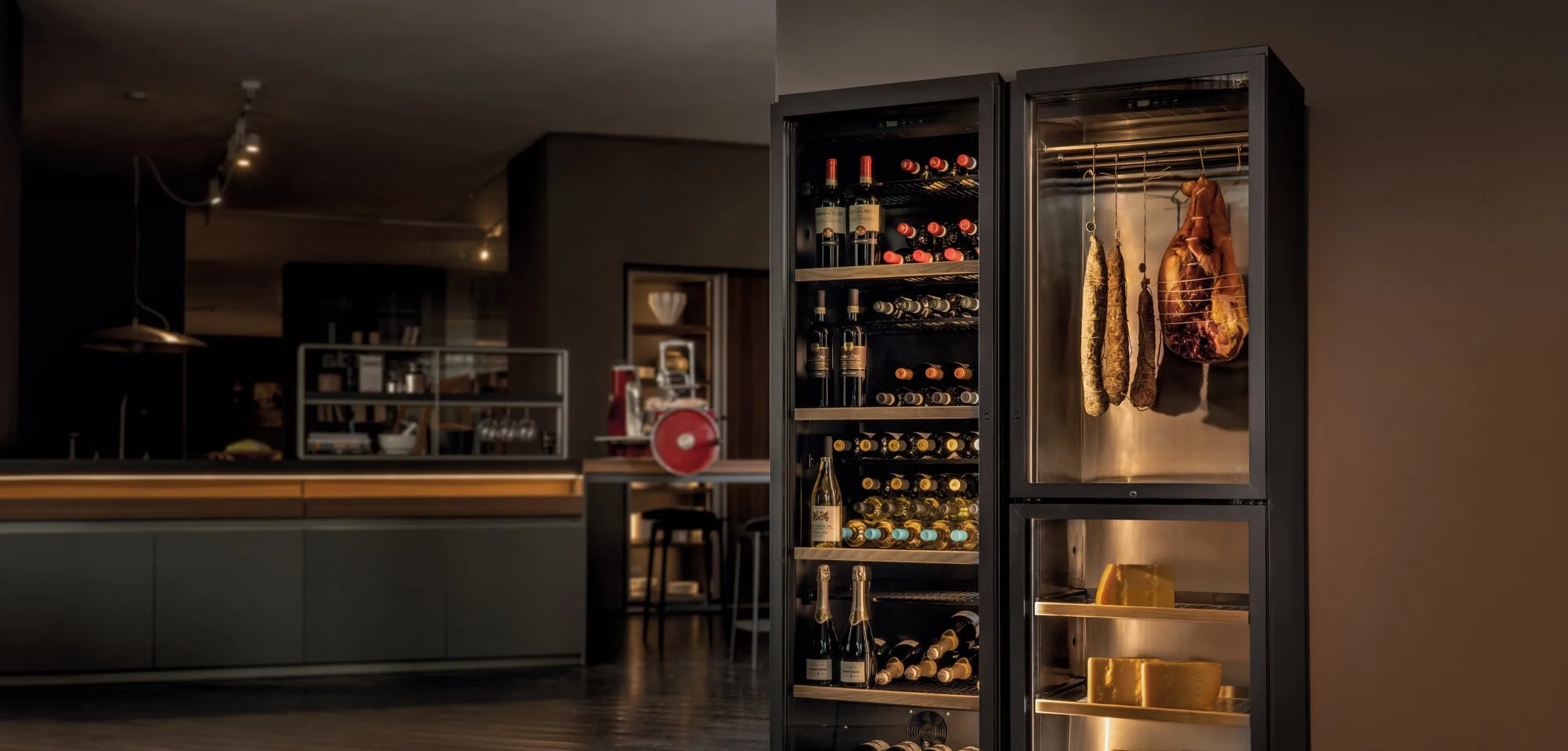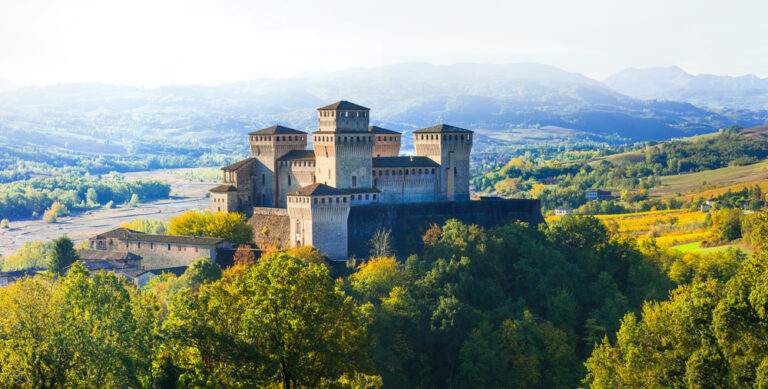Cigar Storage: A Matter of Humidity and Temperature
The SG model of the Parma line is born, a cellar with the ideal space for storing cigars.
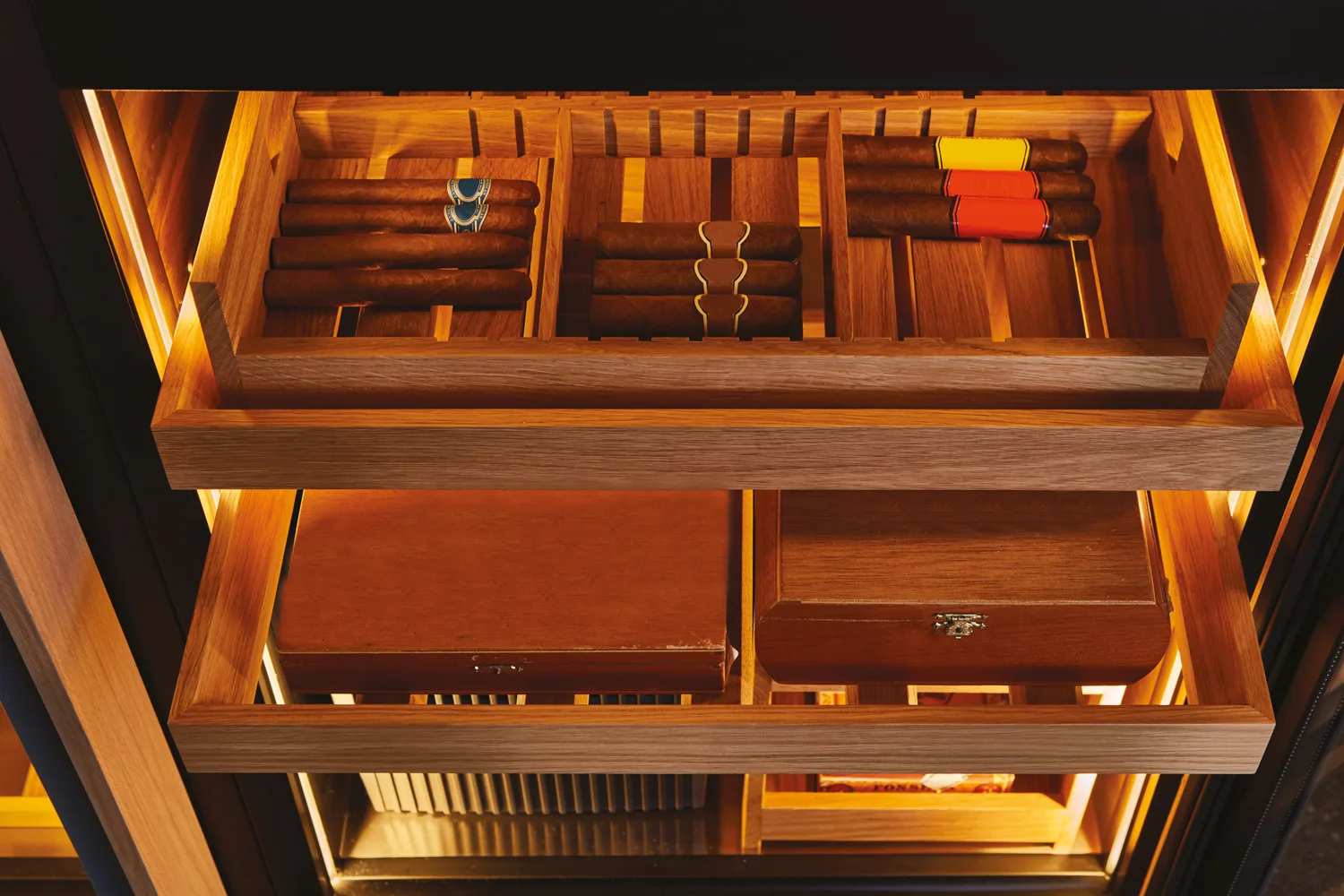
Owner and production manager
How the cigar arrives in Europe
When you think of a cigar, you almost always associate it with the figure of a calm and elegant man. Many history buffs even associate it with the figure of former British Prime Minister Winston Churchill.
The cigar has always been associated with reflection, with time passing slowly and with big smokes, precisely because doing so requires slow gestures and relaxed times. To answer the question of how the cigar arrived in Europe, we need to go back in time to a century when, during a meeting between an old Mayan priest and a Spanish conqueror, the latter asked what the priest was holding in his hands: a sort of pipe.
From that event, we can cite the many words borrowed by the Spanish from the Mayan language, such as the verb sikar (to smoke) from which the Spanish term cigarro derives.
The first country in Europe to export tobacco and subsequently also cigars from the new continent to Europe was Spain. Initially, tobacco was used as a natural remedy against headaches or other similar pains and later as a cigarette.
Not everyone knows, however, that the first country to hold the reputation of “smoker” in Europe was France, a country open to innovations to the point that documents have been found indicating the first taxes on tobacco.
In Italy, the cigar arrived later, again through the Spanish who introduced it into aristocratic homes during the Kingdom of Naples.

How is the cigar made?
A cigar is made of tobacco leaves rolled by hand or machine and from which the ribs have been removed. It takes on its classic cylindrical shape through a long process of the tobacco leaves, which are first dried, then fermented and rolled and only subsequently put together to give it shape.
The cigar is made up of three elements: tripa, capote and wrapper.
The tripa, or the “filling” of the cigar, can be made up of either whole leaves as is the case for the most valuable cigars, or of chopped tobacco as is the case for the majority of cigars on the market. The tripa is then covered with another tobacco leaf, called capote, which has the function of giving the cigar an initial shape.
Subsequently, the tripa and capote are enclosed thanks to a drop of odorless and tasteless vegetable resin by another leaf specifically stretched, worked and sealed to the cigar, called wrapper.
The wrapper is removed only shortly before lighting the cigar, and is usually removed or pierced using a cutter or puncher.
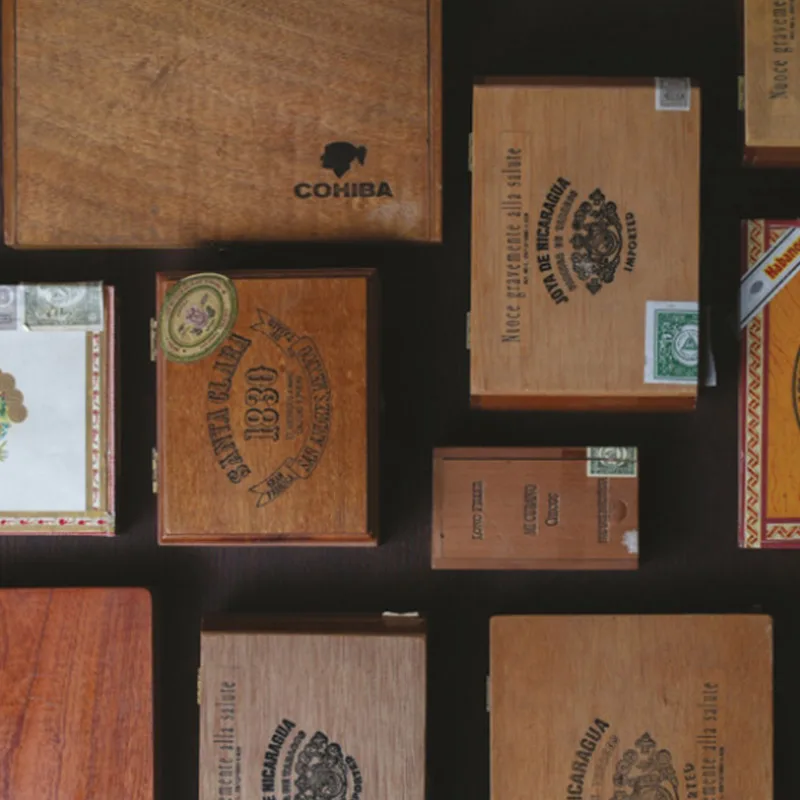
Where do the best cigars come from?
South America and Central America are the regions where the majority of tobacco leaves are produced, thanks to the favorable climate for their cultivation.
The cigars produced in Cuba have been considered the best on the market for many years and still are, for example as happens with the Cuban cigar Cohiba, which is characterized by its aromatic variation throughout its smoking.
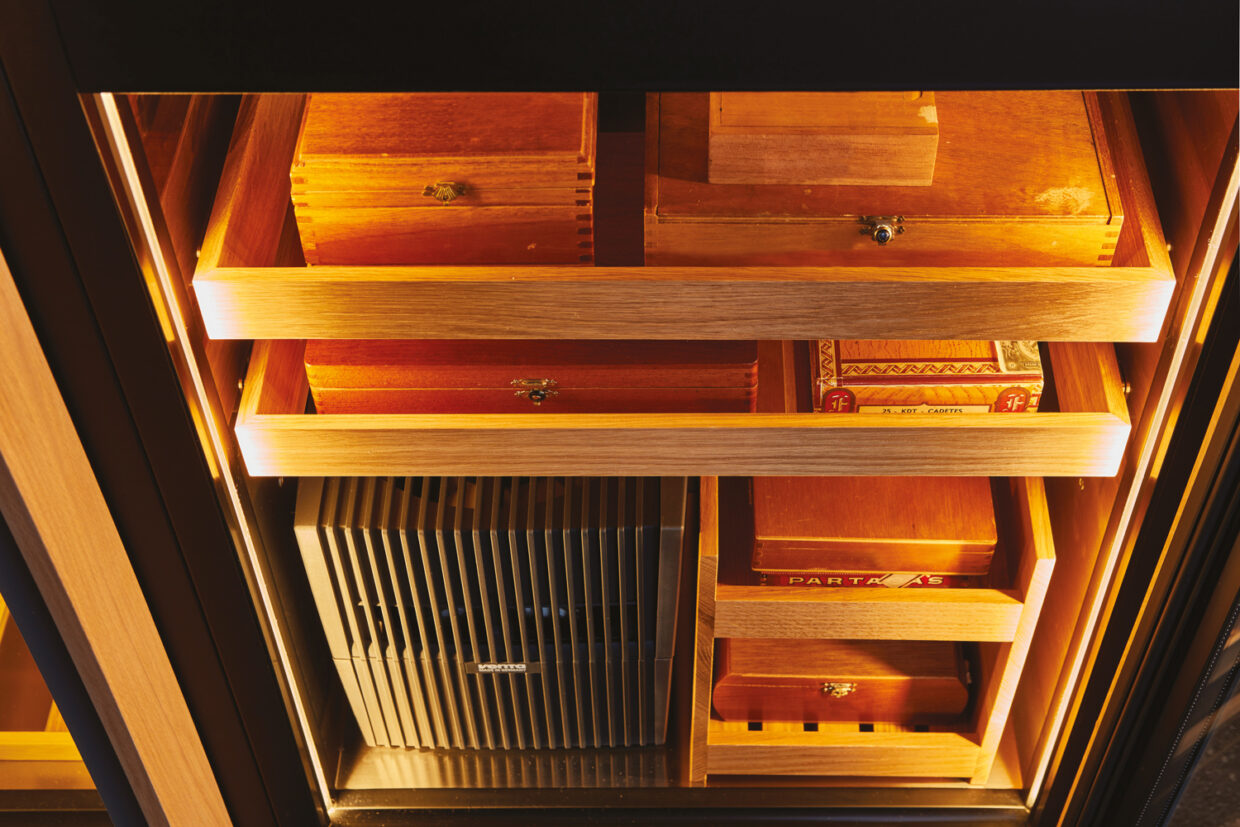
How to preserve the quality of cigars?
The fundamental parameters to always monitor when it comes to preserving the physical and organoleptic characteristics of cigars are two:
- humidity
- temperature
The cigar is very delicate and storing it in an unsuitable environment could compromise its organoleptic characteristics. Suffice it to say that some of the most prestigious cigars continue to mature and improve for over 10 – 15 years after their production.
Humidity is the first parameter to be checked for optimal storage of cigars, furthermore, the percentage of relative humidity of the cigar packaging must remain between 65% and 72% and at a constant temperature of 18 – 20 degrees centigrade. This is because a cigar with a humidity below 50% will tend to dry out more quickly, losing its essential oils that give it its aroma.
For this reason, some cigars are packaged for sale in an aluminum tube with a thin sheet of cedar inserted inside, to keep the humidity level as constant as possible.
The temperature must remain constant between 16 and 20 degrees centigrade; below this temperature the cigar could freeze, risking creating some difficulty for the smoker, while above 20 degrees centigrade it would cause the product to mature too quickly, causing irreparable damage to long-term conservation.
Another element to take into consideration when talking about cigars and tobacco is the bicho. The bicho is the cigar moth, a fairly small insect a few millimeters long and brown in color. Even if very small, this insect is very dangerous for the cigar because it is able to eat a large quantity of cigars or leaves if you don’t notice in time, irreparably ruining both the cigars and the tobacco.
The Parma System: A New System Designed for Cigar Preservation
Aware of the importance of creating an environment where humidity and temperature levels can be best managed, the SG model of the Parma line was born, a cellar containing the ideal space for storing cigars that can easily fit into any environment.
The Sistema Parma was created for the seasoning and maintenance of cured meats and cheeses, subsequently, thanks to a dedicated study, the configuration for storing cigars was born.
The SG model is a real air-conditioned cabinet for the optimal storage of cigars characterized by a humidifier combined with sliding drawers and wooden trays.
The humidity inside the cabinet has been designed to be constant between 60 and 80% and with a temperature that does not exceed 20 degrees centigrade in such a way as to help the product with the necessary seasoning while maintaining the essential characteristics of the cigars.
The IP cellars boast a Made in Italy production and are entirely customizable, with the possibility of choosing the position and quantity of shelves for each cellar.
The essentiality of the shapes allows you to inhabit different spaces, from professional to domestic and expresses its vision through the essentiality of the lines and the quality of the materials.
